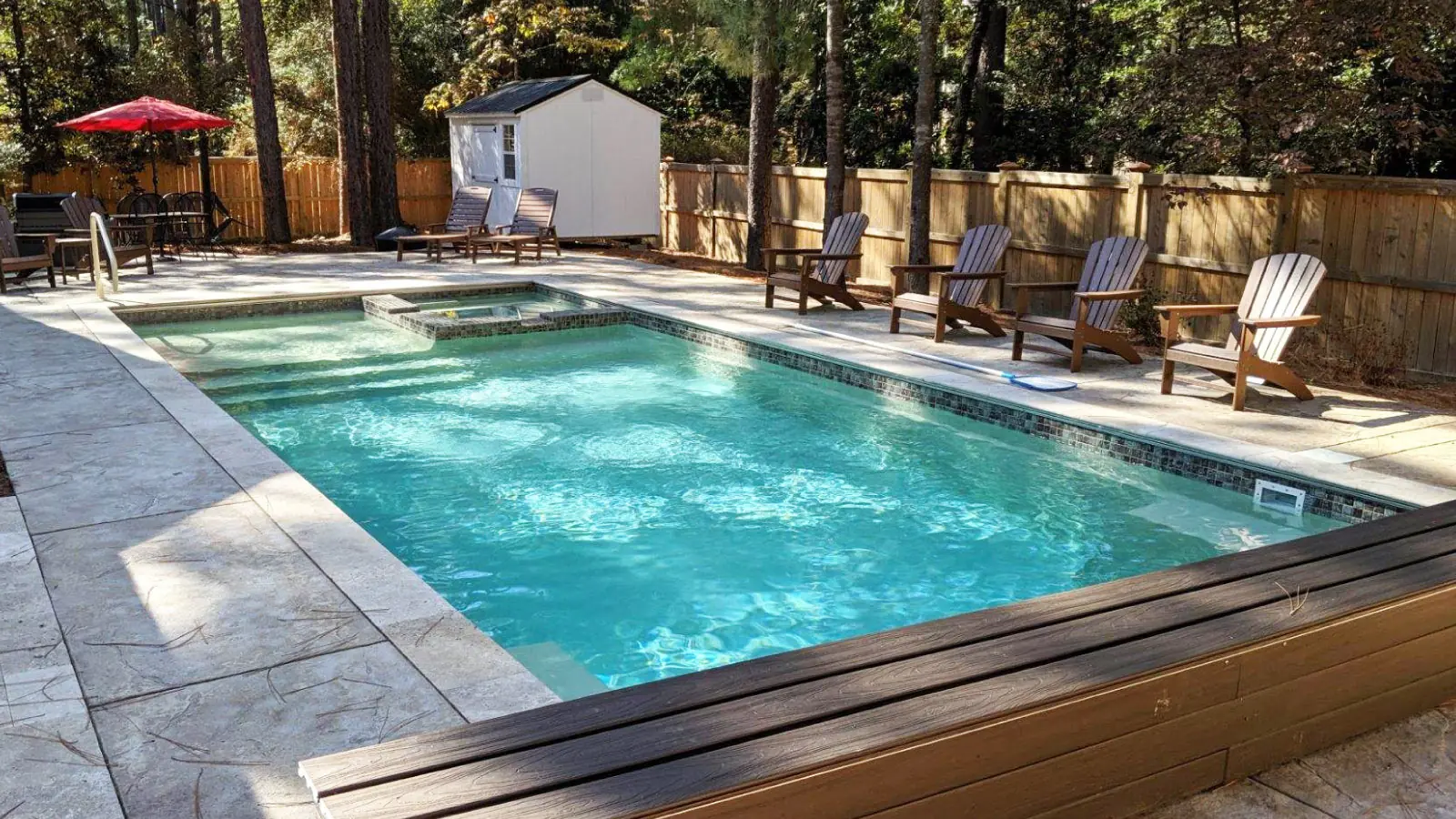
Pool Maintenance Made Easy
Introduction
Imagine stepping into crystal-clear water on a hot summer day, knowing your pool is perfectly maintained with minimal effort. Sounds like a dream, right? Many pool owners assume pool maintenance is a time-consuming hassle, but with the right approach, keeping your pool in top shape can be simple and stress-free.
In this guide, we’ll break down pool maintenance into easy-to-follow steps, helping you enjoy a pristine swimming experience year-round. Whether you have a fiberglass pool or another type, these tips will save you time, effort, and money.
Why Fiberglass Pools Are Low Maintenance
Not all pools require the same level of upkeep. Fiberglass pools are known for their durability and ease of maintenance, making them an excellent choice for homeowners who want a hassle-free swimming experience.
Advantages of Fiberglass Pools
- Non-Porous Surface: Unlike concrete pools, fiberglass pools have a smooth, non-porous surface that prevents algae buildup. This means less scrubbing.
- Fewer Chemicals Required: Because algae and bacteria struggle to cling to the surface, fiberglass pools require fewer sanitizing chemicals, making maintenance more manageable and cost-effective.
- Durability: Fiberglass is highly resistant to cracks, stains, and surface damage, reducing the need for repairs and resurfacing.
- Energy Efficiency: Fiberglass pools retain heat better than concrete, helping to lower heating costs and making your pool more energy-efficient.
Looking for a low-maintenance pool option? Explore our fiberglass pool designs to find the perfect fit for your backyard.
Daily Pool Maintenance Tips
A few minutes of daily upkeep can prevent bigger problems down the road.
- Skim Debris: Use a skimmer net to remove leaves, bugs, and dirt before they sink to the bottom.
- Check Water Levels: Ensure the water level is optimal—too low can damage the pump, while too high can reduce skimming efficiency.
- Monitor Pool Circulation: Run the pump for at least 8 hours a day to keep water moving and prevent stagnation.
Weekly Pool Maintenance
A more thorough approach is necessary each week to maintain water clarity and hygiene.
- Test Water Chemistry: Use a testing kit to check pH, chlorine, and alkalinity levels. Keeping these balanced prevents bacteria growth and equipment damage.
- Brush Pool Walls & Floor: Even with a fiberglass pool’s smooth surface, brushing helps prevent buildup and keeps the pool looking fresh.
- Vacuum the Pool: Removing dirt and debris that settle at the bottom ensures clean, clear water.
- Clean the Skimmer & Pump Baskets: Emptying these baskets regularly allows for proper water flow and prevents clogging.
Monthly Pool Maintenance
Once a month, deep cleaning and equipment checks help keep your pool in top condition.
- Shock the Pool: Adding a chlorine shock treatment eliminates bacteria, contaminants, and cloudy water.
- Inspect Pool Equipment: Check for signs of wear or malfunction in filters, pumps, and heaters to avoid costly repairs.
- Deep Clean the Filter: Whether you have a sand, cartridge, or DE filter, cleaning it thoroughly ensures optimal performance and water clarity.
Seasonal Pool Care
Each season brings unique challenges for swimming pool maintenance.
Spring
- Remove the pool cover and clean any accumulated debris.
- Test and balance the water chemistry before the first swim.
Summer
- Increase filtration time to handle higher usage.
- Maintain proper chlorine levels to prevent algae growth.
Fall
- Skim leaves frequently to prevent clogging.
- Reduce pump runtime as temperatures drop.
Winter
- If closing the pool, lower water levels and add winterizing chemicals.
- Use a sturdy cover to protect against debris and harsh weather.
Troubleshooting Common Pool Problems
Even with regular maintenance of swimming pool, issues can arise. Here’s how to handle them:
- Cloudy Water: Check and adjust chlorine, pH, and filtration. Proper circulation and a clean filter help restore clarity.
- Algae Growth: Shock the pool and brush affected areas to remove algae. Keeping chlorine levels balanced prevents future outbreaks.
- Stains on Pool Surfaces: Identify the cause—metals, organic matter, or chemical imbalances—and use the appropriate stain removers.
Tools for Easy Maintenance
Investing in the right tools makes pool maintenance effortless.
- Robotic Pool Cleaners: These automated devices take care of vacuuming, reducing manual work.
- Water Testing Kits: Digital or strip-based kits ensure accurate chemical balance.
- Telescopic Poles & Attachments: Make cleaning hard-to-reach areas easier and more efficient.
Energy-Efficient Maintenance
Save money and reduce environmental impact with these tips:
- Use a Pool Cover: Minimize evaporation and heat loss, reducing heating and chemical costs.
- Opt for Variable-Speed Pumps: These pumps adjust speed based on need, cutting down energy consumption.
- Schedule Filtration During Off-Peak Hours: Running the pump at night or early morning can lower electricity costs.
Professional Maintenance Services
Sometimes, calling in the experts is the best option.
When to Hire a Professional
- If persistent issues arise despite regular maintenance.
- For seasonal openings and closings to ensure everything is properly set up.
- When repairs or equipment replacements are needed.
Maintaining Pool Surroundings
A clean pool area enhances safety and aesthetics.
- Sweep and Wash the Pool Deck: Prevent dirt and debris from getting into the water.
- Trim Nearby Trees and Plants: Reduce leaf and pollen contamination.
- Check for Slippery Surfaces: Address algae or mold growth on poolside areas to prevent accidents.
Conclusion
Maintaining a pool doesn’t have to be overwhelming. By following a simple routine for swimming pool maintenance, you can enjoy a clean, safe, and relaxing swimming experience year-round. Whether you handle the upkeep yourself or rely on professionals, establishing good habits ensures your pool remains a beautiful backyard oasis.
Ready to make pool care easier? Start implementing these tips today and enjoy worry-free swimming.

